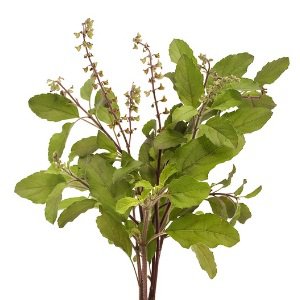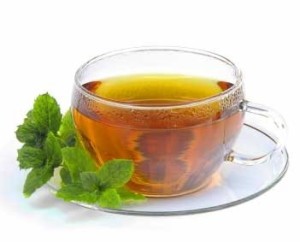Tulsi – The Indian holy power plant – Queen of herbs
Tulsi (Ocimum sanctum) two varieties i.e. purple/black (Krishna Tulsi) and green (Rama Tulsi)
Plants are of the important sources of medicine and a large numbers of drugs in use are derived from plants. The therapeutic uses of plant are safe,economical & effective as their ease of availability. Among the plants known for medicinal value, the plants of genus Ocimum belonging to family Lamiaceae are very important for their therapeutic potentials.
Ocimum sanctum has two varieties i.e. black (Krishna Tulsi) and green (Rama Tulsi), their chemical constituents are similar . Tulsi is a Sanskrit word which means “matchless one”. Several medicinal properties have been attributed to the Tulsi plant not only in Ayurveda and Siddha but also in Greek, Roman and Unani systems of medicine .
Tulsi – The Indian holy power plant
Tulsi is a fragrant bushy perennial growing up to 1.5 m in height with profusions of white blooms and slightly purple tinted foliage. This herb has been known from as early as the Vedic period and is held sacred by the Hindus and is often planted around temples and uses in rosaries
Medicinal properties of tulsi unravelled -Research results NCBS and BMC plant biology
Researches unravelled by a team of nearly 30 scientists at the Bengaluru-based National Centre for Biological Sciences (NCBS) and the Centre for Cellular and Molecular Platforms, Bengaluru.
Tulsi is well known for its myriad medicinal properties — antibacterial, antifungal, antipyretic, antioxidant, antiseptic and anticancer. Of the nearly 40 secondary metabolites that have medicinal value, the genes and enzymes responsible for the production of 14 metabolites have been mapped on the genome. Not much information on the pathway is available for the remaining metabolites. Of the 14 metabolites that have been mapped, eight have anti-cancer properties and the remaining six have antifungal, antioxidant, anti-inflammatory, antiseptic, and cardio protective properties. The results were published recently in the journal BMC Plant Biology.
“We know tulsi contains many anticancer and other medicinally important properties. Now, using a genome tool we have established the genes responsible for the production of the anticancer compounds,” Ramanathan Sowdhamini from the Biochemistry and Bioinformatics Department, NCBS and one of the corresponding author “( Ref from Hindu News paper)
Tulsi (Ocimum sanctum Linn) – Therapeutic uses – Medicinal values – Health benefits
Tulsi for eye diseases – The leaf juice of tulsi along with Triphala is used in Ayurvedic eye drop preparations recommended for glaucoma, cataract, chronic conjunctivitis and other painful eye diseases.
The juice of fresh leaves is also given to patients to treat chronic fever, dysentery, hemorrhage and dyspepsia
A decoction of Tulsi leaves is a popular remedy for cold . Tulsi leaves also check vomiting and has been as anthelmintic
As a prophylactic against malaria, fresh Tulsi leaves are taken with black pepper in the morning
Aqueous decoction of whole plant lowers the blood sugar (glucose) level and is said to control diabetes mellitus.
Paste of tulsi leaves are found effective in the treatment of ring-worm and other skin diseases . Tulsi has been also recommended for use as antidote for dog bite, scorpion bite and insect bite in traditional system of medicine
Types of Tulsi – Purple leaves (Krishna) and Green leaves (Rama )
Of the 5 (Ocimum sanctum) tulsi subtypes investigated only the 2 domesticated types Rama and Krishna leaves have been found to contain very high concentration of these medicinally important metabolites. The Rama tulsi contains “high abundance” of medicinally important metabolites. The concentration of eugenol and ursolic acid in both leaf and stem was more in Rama than krishna subtype
Tulsi has been widely used for curing various ailments due to its great therapeutic potential. A number of pharmacological effects like hypoglycaemic,immunomodulatory, antistress,anti inflammatory,anti -ulcerogenic,antihypertensive have been studies by various workers. These studies help in establishing a scientific basis for therapeutic uses the plant. however, much more studies are still required to explore other potential activities of this plant
























